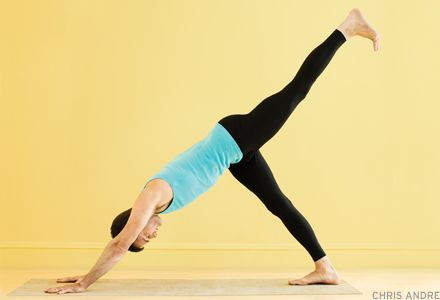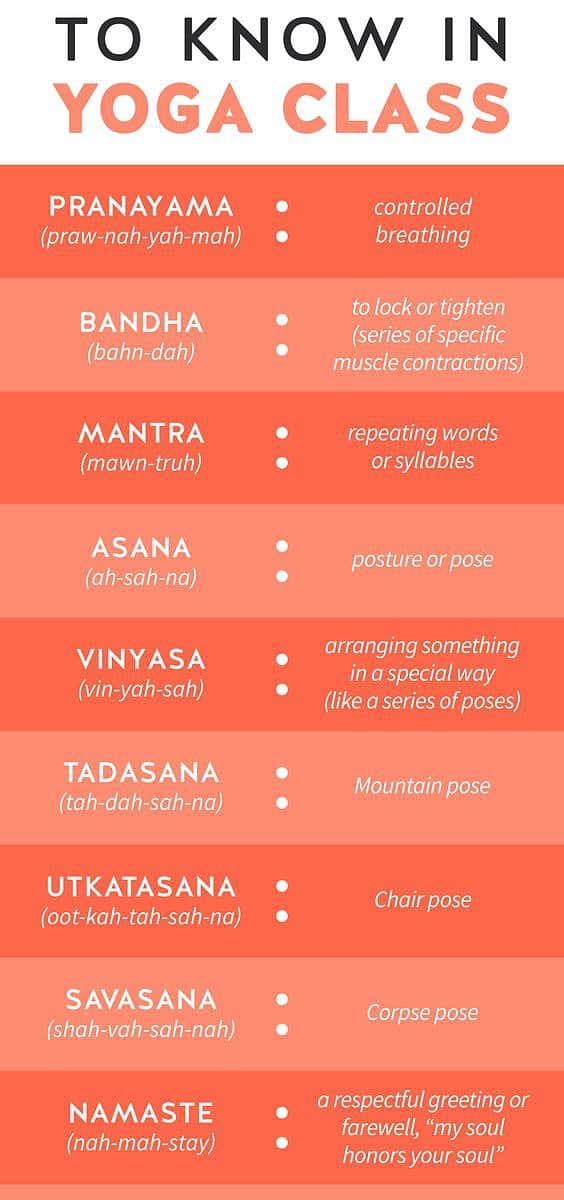Welcome to our comprehensive guide on yoga terms! If you’re new to the world of yoga, you may find yourself overwhelmed by the various terms and jargon used in this ancient practice.
In this article, we’ll break down the most commonly used yoga terms and provide you with a clear understanding of what they mean. Whether you’re a beginner or an experienced yogi, this guide will help you navigate the world of yoga with confidence.
1. Asana
Asana refers to the physical postures or poses practiced in yoga. It is the most recognizable aspect of yoga and involves holding specific body positions to promote strength, flexibility, and balance. Asanas are often named after animals, objects, or natural elements, such as Downward Dog, Tree Pose, or Warrior II.
2. Pranayama
Pranayama is the practice of controlling and regulating the breath. It involves various breathing techniques that help to calm the mind, increase energy levels, and improve overall well-being. Pranayama exercises are often incorporated into yoga classes and can be practiced on their own as well.
3. Chakra
Chakras are energy centers located along the spine. In yoga, there are seven main chakras, each associated with different physical, emotional, and spiritual aspects of our being. Balancing and activating these chakras through yoga and meditation can help promote harmony and well-being.
4. Namaste
Namaste is a traditional greeting used in yoga and is often said at the end of a class. It is a Sanskrit word that translates to “I bow to you” or “the divine in me honors the divine in you.” Namaste is a way of acknowledging and honoring the inner light and divinity within ourselves and others.
5. Savasana
Savasana, also known as Corpse Pose, is the final relaxation pose at the end of a yoga practice. It involves lying flat on your back with your arms and legs relaxed, allowing your body and mind to fully relax and integrate the benefits of the practice. Savasana is often considered one of the most important and challenging poses in yoga.
Other Common Yoga Terms
| Yoga Term | Definition |
|---|---|
| Asana | Yoga pose or posture |
| Pranayama | Breathing exercises and control of breath |
| Savasana | Corpse pose, a relaxation pose at the end of a yoga session |
| Vinyasa | Flowing sequence of poses synchronized with breath |
| Hatha Yoga | Physical yoga practice, involving asanas and pranayama |
| Kundalini Yoga | A spiritual and physical practice aiming to awaken kundalini energy |
| Chakra | Energy centers in the body |
| Om or Aum | Sacred sound and spiritual icon in Hinduism and Buddhism |
| Namaste | A greeting and salutation meaning “the divine in me bows to the divine in you” |
| Mudra | Hand gestures used in meditation and pranayama |
| Mantra | Sacred word, phrase, or sound repeated during meditation |
| Guru | Spiritual teacher or guide |
| Drishti | Focused gaze or point of focus during a pose |
| Prana | Life force or vital energy |
| Ujjayi Pranayama | Victorious breath, a breathing technique with a soft hissing sound |
| Sun Salutation | A sequence of yoga poses done in a flowing, continuous movement |
| Dhyana | Meditation, the seventh limb of Ashtanga Yoga |
| Ashtanga Yoga | Eight-limbed yoga path outlined by Patanjali |
| Sanskrit | Ancient Indian language in which many yoga terms are derived |
| Surya Namaskar | Sun Salutation, a sequence of yoga poses in a flowing movement |
| Bandha | Energy lock or contraction of certain muscles during yoga poses |
| Ayurveda | Traditional Indian system of medicine and well-being |
| Ahimsa | Non-violence, one of the ethical principles in yoga |
| Pratyahara | Withdrawal of the senses from external stimuli during meditation |
| Ananda | Bliss or divine joy |
| Sukhasana | Easy Pose, a comfortable seated meditation posture |
| Niyama | Ethical guidelines in yoga practice |
FAQs on Yoga Terms
What are some other common yoga terms?
- Vinyasa: A flowing sequence of yoga poses synchronized with the breath.
- Om: A sacred sound and mantra often chanted at the beginning or end of a yoga practice.
- Yogi/Yogini: A person who practices yoga.
- Mantra: A repeated word, phrase, or sound used for meditation or spiritual purposes.
- Prana: The life force or vital energy that flows through all living beings.
How can I remember all these yoga terms?
Learning yoga terms can be overwhelming at first, but with practice and repetition, they will become familiar to you. Here are a few tips to help you remember them:
- Take notes during your yoga classes and review them regularly.
- Use flashcards or create a yoga glossary for quick reference.
- Practice using the terms in your own yoga practice or when discussing yoga with others.
- Immerse yourself in the yoga community and engage in conversations about yoga terms.
Are there any yoga terms specific to certain styles of yoga?
Yes, different styles of yoga may have their own unique terms. For example:
| Hatha Yoga | Vinyasa Yoga | Ashtanga Yoga |
|---|---|---|
| Pranayama | Chaturanga | Ujjayi Breath |
| Mountain Pose | Downward Dog | Primary Series |
| Child’s Pose | Warrior I | Half Lotus |
Can I practice yoga without knowing all the terms?
Absolutely! While knowing the terms can enhance your understanding and appreciation of yoga, they are not essential to practicing yoga. The most important aspect of yoga is the experience and connection you cultivate with your body, breath, and mind. As you continue to practice, you will naturally become more familiar with the terms.
Conclusion
Now that you have a better understanding of some common yoga terms, you can approach your yoga practice with confidence and clarity. Remember, yoga is not just about the physical postures, but also about cultivating a deeper connection with yourself and the world around you. So, the next time you step onto your mat, embrace the beauty of these yoga terms and let them guide you on your journey to health and well-being.
Fun Fact: Did you know that yoga has been practiced for thousands of years? Its origins can be traced back to ancient India, where it was developed as a holistic system for physical, mental, and spiritual well-being.
Originally posted 2023-07-14 13:36:11.



